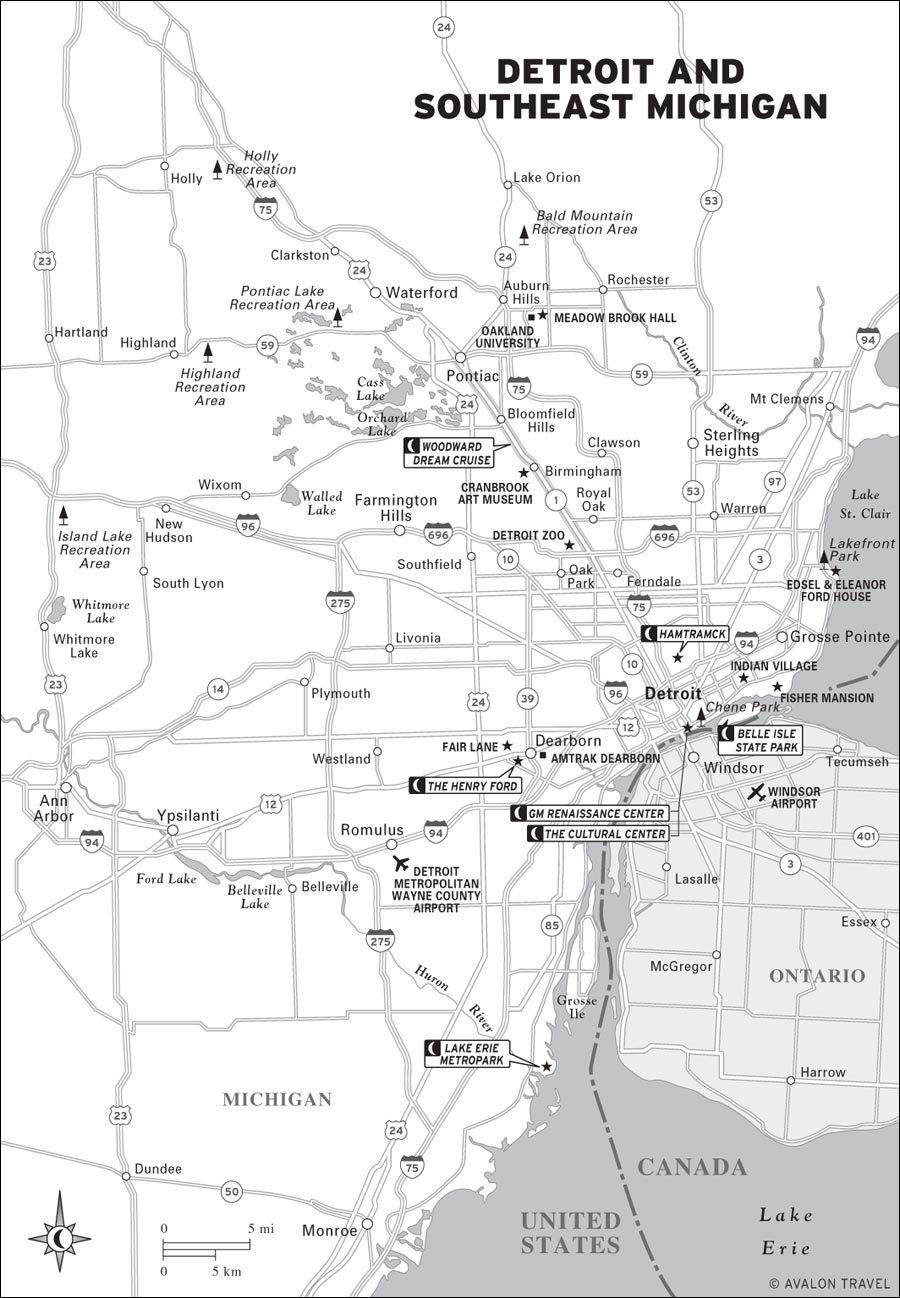 SPOTLIGHT
SPOTLIGHT
DETROIT & ANN ARBOR
LAURA MARTONE
Although Detroits official mottoSperamus meliora; resurget cineribusresulted from a catastrophic fire that nearly destroyed the fledgling town in 1805, its meaning could just as easily refer to modern times: We hope for better things. It will rise from the ashes. This is a city, after all, that has witnessed its share of soaring highs and crushing lows, and yet has always managed to come back swinging.
Detroit truly hit the map when Henry Fords assembly line transformed the townand the worldforever. With the assistance of the Big Three (Ford, General Motors, and Chrysler), the Motor City thrived during the first half of the 20th century. Reliance on a single industry, however, inevitably led to downswings that mimicked those of the auto industry, plunging the racially divided metropolis into years of crime and unemploymentmodern problems that have, at times, been exaggerated by the national media.
But the Motor City is defined less by its adversity and more by its innovation and fortitude. Crime is not the crippling issue it once was, and development has helped to revitalize the downtown area. Unofficially nicknamed the Renaissance City in the 1970s, Detroit has finally begun to shed its troubled past. Although its still a work-in-progress, this tenacious townalso known for its Motown music, rock n roll vibe, and legendary sports figureshas improved its tarnished image since the turn of the new millennium, and nowhere is that more apparent than along the waterfront.
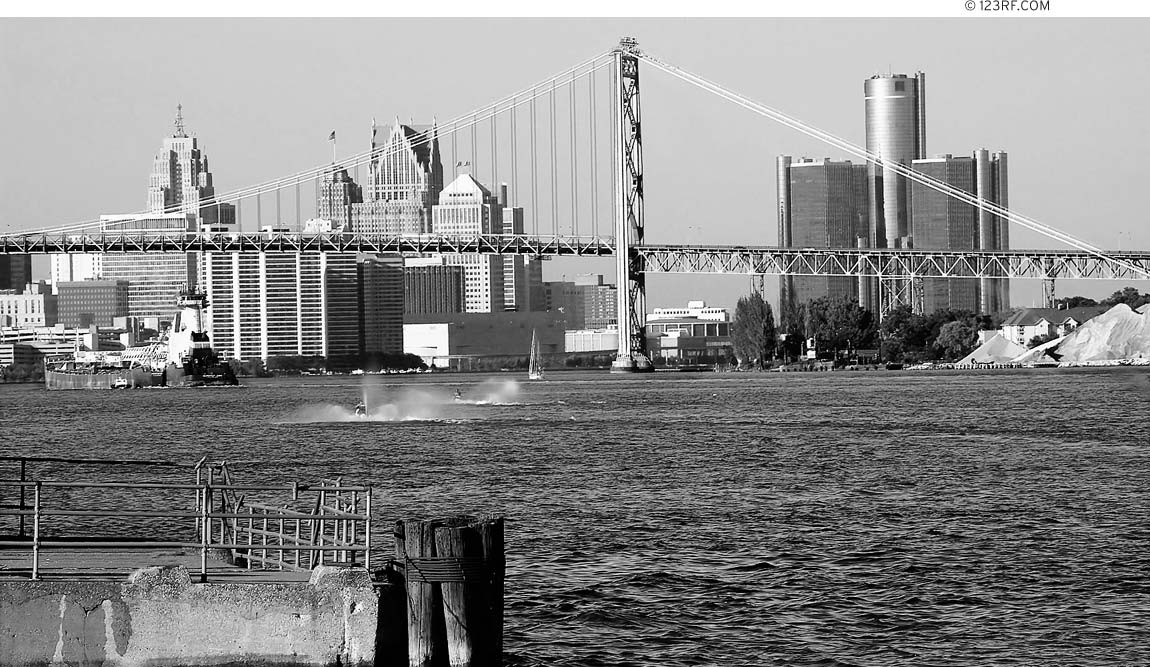
Dominating the Detroit skyline, the once-controversial Renaissance Center has undergone an extensive renovation, transforming the distinctive office, hotel, and retail complex into the world headquarters of General Motors. In addition, the city has embarked upon an ambitious development project along the Detroit River, which it shares with Windsor, Canada. When completed, the Detroit Riverfront will comprise a new harbor, the expanded William G. Milliken State Park, and a network of biking and jogging trails. Other recent downtown enhancements include a new ballpark for the Detroit Tigers, an adjacent football stadium for the Detroit Lions, and three casino resorts.
LOOK FOR M TO FIND RECOMMENDED SIGHTS, ACTIVITIES, DINING, AND LODGING.
M GM Renaissance Center: Towering above the Detroit River since the late 1970s, the 73-story Ren Cen is home to GMs world headquarters, a 1,300-room hotel, a fitness center, a movie theater, and numerous shops and restaurants. Visitors can take a free, one-hour tour of the enormous complex, which also includes a vintage auto collection, a tropical atrium overlooking the river, and incredible views of the Detroit and Windsor skylines ().
M Belle Isle State Park: Situated in the Detroit River, Belle Isle has long been a treasured spot for visitors and area residents alike. Highlights include designated biking paths, a zoo, a swimming beach, a conservatory, golf facilities, the Dossin Great Lakes Museum, two fishing piers, and numerous historic edifices ().
M Greektown: One of several ethnic enclaves in the Detroit metropolitan area, this historic neighborhood invites visitors to experience Greek culture at its best. Here, youll find the longstanding Pegasus Taverna, the annual Detroit Greek Independence Day Parade, and a flashy casino ().
M The Cultural Center: Art and culture lovers flock to this part of Midtown, which boasts two art museums, three history museums, a science center, an anthropology museum, a childrens museum, and several well-preserved Victorian structures, plus nearby theaters and art galleries ().
M Hamtramck: Founded in the early 20th century, this village has long lured Polish immigrants and other Europeans. While the neighborhood is more culturally diverse these days, visitors can still come here for Polish sausages, European baked goods, and traditional artwork ().
M The Henry Ford: At this curious complex, visitors can view Henry Fords childhood home, Thomas Edisons Menlo Park laboratory, President Kennedys limousine, Rosa Parkss bus, and a working 19th-century farm. You can also hitch a ride to the Ford truck assembly plant for an informative walking tour ().
M Lake Erie Metropark: South of Detroit lies this well-preserved, 1,607-acre recreation area, popular among hikers, bird-watchers, anglers, golfers, cross-country skiers, and those who appreciate stunning views of the Detroit River, Lake Erie, and North Americas first international wildlife refuge ().
M Woodward Dream Cruise: This annual mid-August parade down Woodward Avenue, from Ferndale to Pontiac, has become the worlds largest one-day automotive event, luring 1.5 million people and more than 40,000 classic cars from around the globe ().
Detroits many suburbs have also experienced a revival, marked by the opening of such attractions as the Holocaust Memorial Center in Farmington Hills and the Arab American National Museum in Dearborn, both of which celebrate the rich diversity of Detroits people. Beyond the greater Detroit metropolitan area, visitors will discover a wealth of activities in Southeast Michigan, from skiing on Mt. Holly to watching the Woodward Dream Cruise. Despite decades of struggle, it seems that Detroit and its surrounding towns are finally on the upswing, once again affirming the citys two-century-old motto.
ORIENTATION
Almost prophetically, early Detroit was laid out like the spokes of a wheel. The planlaid down by Judge Augustus Woodward, the first chief justice of the new Michigan territoryforeshadowed the citys major industry by more than a century. Woodward arrived in 1805 to find no more than a burned-out trading post on the narrow straits of the riverdtroit, incidentally, means straits. While little else remains of Woodwards grandiose plans to make Detroit the Paris of the Midwest, the citys main streetsJefferson Avenue, Gratiot Avenue, Woodward Avenue, Grand River Avenue, Michigan Avenue, and Fort Streetstill echo that early hexagonal grid, shooting off at diagonal angles from a central axis. Woodward serves as the citys main dividing line, splitting the landmass and its residents into east and west.
Compared to most U.S. urban areas, Detroit isnt too difficult to navigate. Though the city, its suburbs, and the rest of Southeast Michigan constitute a sprawling tapestry of distinct neighborhoods and communities, several bisecting highways and interstates make it easy to get around. For instance, I-75 snakes through downtown Detroit, linking southern towns like Monroe to northern destinations like Royal Oak, Pontiac, and Holly. Other major routes include I-96 from Lansing; I-696, which passes through Farmington Hills, Southfield, and Ferndale; and I-94, which cuts across the southern part of the Heartland, passes north of Detroits Cultural Center and west of the Grosse Pointe suburbs, and heads north toward Port Huron.


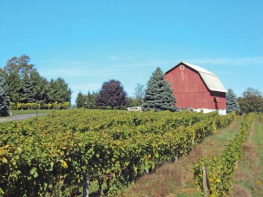
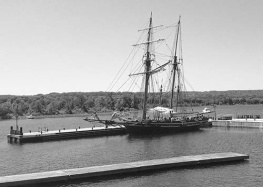

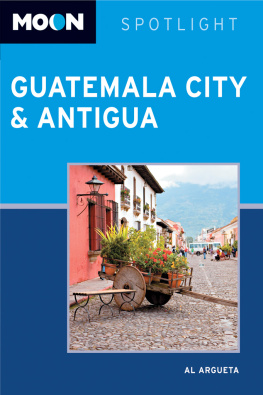
 SPOTLIGHT
SPOTLIGHT


